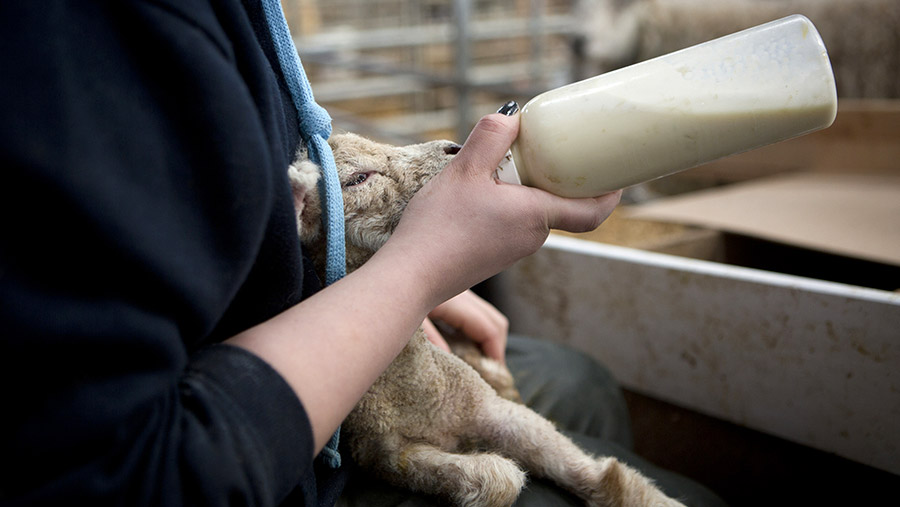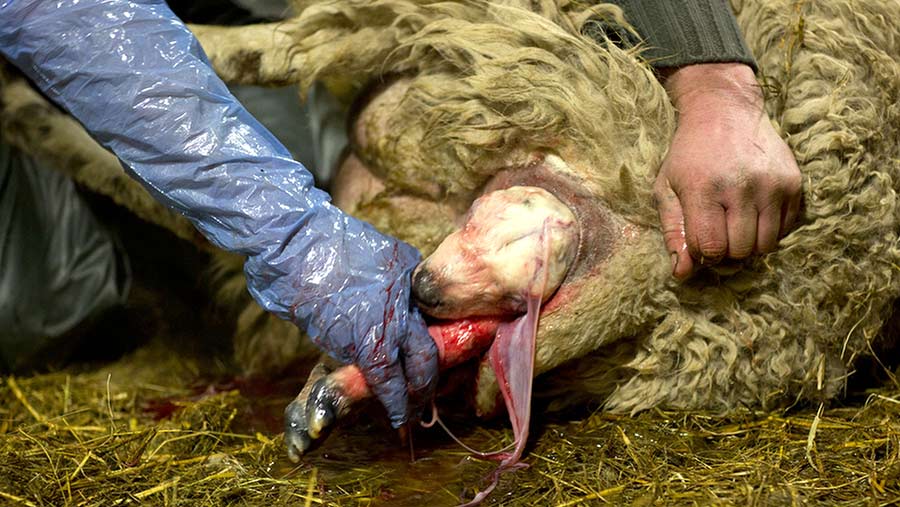8 ways to prepare for a busy lambing season
 © London News Pictures/Shutterstock
© London News Pictures/Shutterstock With lambing already under way on some units and not far around the corner for most commercial sheep farms, it is timely to start thinking about preparation for lambing.
It is never too early to start getting ready for what is the culmination of many months of hard work.
Ed Hill, from Thrums Veterinary Group, Kirriemuir, gives a few pointers to what should be considered essential to make lambing a success.
See also: 7 key lambing diseases: How to prevent and treat them
1. Get ewes in the right body condition
- As a minimum, ewes should be body condition scored in mid-pregnancy (scanning time) and close to lambing. Ewes not hitting targets should be managed separately.
- Aim for a BCS of 2.5-3 out of 5 from mid-pregnancy onwards.
- Ewes in the correct BCS at lambing experience fewer problems either side of labour, their lamb’s survival will be greater and their lambs will wean heavier.
- The AHDB “Better Returns” manual has some excellent advice on condition scoring of ewes, and your local sheep vet can also provide practical advice.
2. Provide the right nutrition
- Almost all diseases encountered at lambing time have a nutritional component. Get nutrition right and most of these diseases cease to be a problem.
- Get your forage analysed.
- Seek independent advice to formulate a nutrition plan. A nutritionist or your sheep vet will be able to do this for you.
- Check the ration is doing what it’s supposed to be doing – a “metabolic profile” involves blood sampling a small number of ewes approximately three weeks prior to lambing to look at energy and protein levels.
- Make sure the sheep have enough space to eat the ration without competition – a large ewe will require 50cm of trough space for concentrate feeding, 25cm for restricted forage feeding or 15cm for ad-lib forage feeding. Each ewe should have approximately 1.2m2 lying space in a straw pen. Ensure access to fresh water at all times.
3. Treat ewes pre-lambing
- All ewes should be on a clostridial vaccination schedule and receive a booster pre-lambing. The exact timing of this will depend on the product you use and your vet will be best placed to advise you which is the right vaccination for your system.
- Most ewes don’t need worming at lambing time, provided they are in good body condition and on a suitable plane of nutrition. However, ewe lambs, gimmers, thinner sheep or those carrying triplets may require a wormer as their immunity dips around lambing time. Adding a high-quality source of protein to the diet will also help ewes fight off any worm burden.
- Any trace element deficiencies should be corrected well in advance of lambing time. A bolus provides the most reliable source of trace element supplementation, but not all boluses are the same. Don’t be tempted by the cheaper options and take independent advice on which bolus is best. If in any doubt about the trace element status of your farm, arranging some blood sampling will highlight any deficiencies.

© London News Pictures/Shutterstock
4. Stock up on supplies
- You’ll want to ensure you have a supply of medicines close at hand in case you need them. Make sure they have not passed their expiry date and are stored correctly.
- As a minimum, it would be advisable to carry a broad spectrum antibiotic injection, anti-inflammatory/painkiller injection, calcium/glucose injection, twin lamb drench.
- Remember to check stocks of other essentials such as lubricant, gloves, iodine solution, ropes, prolapse retainers, needles and syringes.
5. Provide enough colostrum
- Colostrum is gold. A lamb that has had a belly full of colostrum is infinitely more likely to survive and grow than one that hasn’t. Lambs require 50ml/kg bodyweight colostrum per feed, amounting to 200ml/kg in the first 24 hours.
- Mother’s own is best, but have a back-up. Frozen surplus colostrum from other ewes in the flock is ideal. Avoid buying in from other flocks because of the risk of diseases like Johne’s or Maedi Visna.
- Powdered colostrum should be a last resort, but it is probably worth having some in storage. There is a huge variation in quality of powdered colostrum, again, your sheep vet should be able to advise on the best ones.
6. Have a protocol for abortions
- A low level of abortion in lambing ewes is normal. However, two or more abortions on any given day or more than 2% abortion in total should prompt investigation. If these thresholds are breached, phone your vet for advice.
- Remember many infectious causes of abortion can also cause disease in humans, so appropriate hygiene and using personal protective equipment when handling an abortion is very important. Pregnant women under no circumstance should come into contact with lambing ewes.
- Ewes that abort should be isolated from the rest of the flock, marked, and should not have female lambs fostered on to them.
7. Ensure you have enough help
- The quantity and quality of labour available can have a big impact on the success of the lambing period. There is good evidence to show that lamb survival is correlated with the degree of labour available on farm at lambing time.
- Make sure you plan well ahead to secure enough help.
- Vet students are a fantastic source of enthusiastic help, but their diary often fills up as much as six months in advance. The NSA Lambing List is a great resource to pair students with farmers.
8. Look after yourself
- After all that effort getting ready to look after the sheep, don’t forget yourself.
- Ensure there is a decent supply of whatever keeps you going when times are tough – jelly babies, flapjacks and chocolate bars for example.
- Make sure there are enough easily cooked meals in the freezer and your warm clothing is up to the job.
- Lambing can be a really stressful time, especially if there are pre-existing worries with the business, family or health. If you ever feel the need to talk there are lots of organisations out there who can help, such as The Samaritans or RABI.
Have a fantastic lambing!
